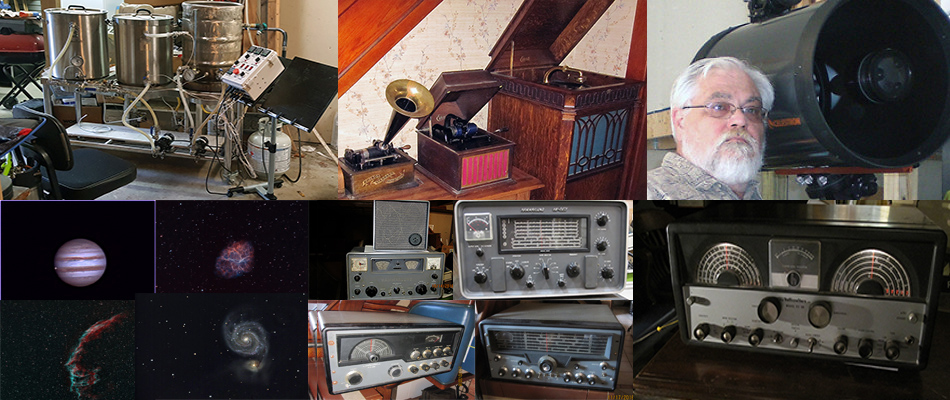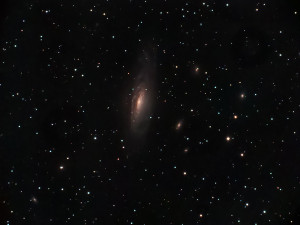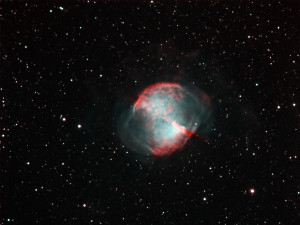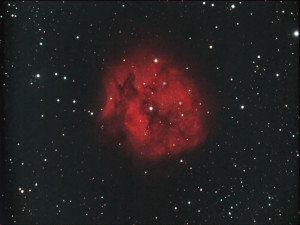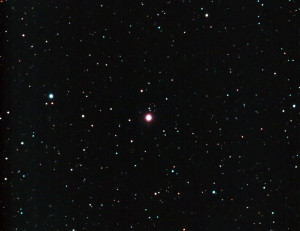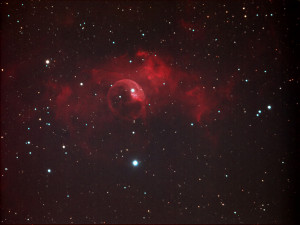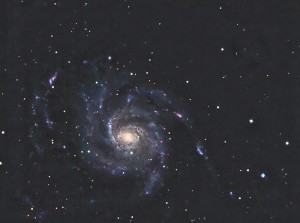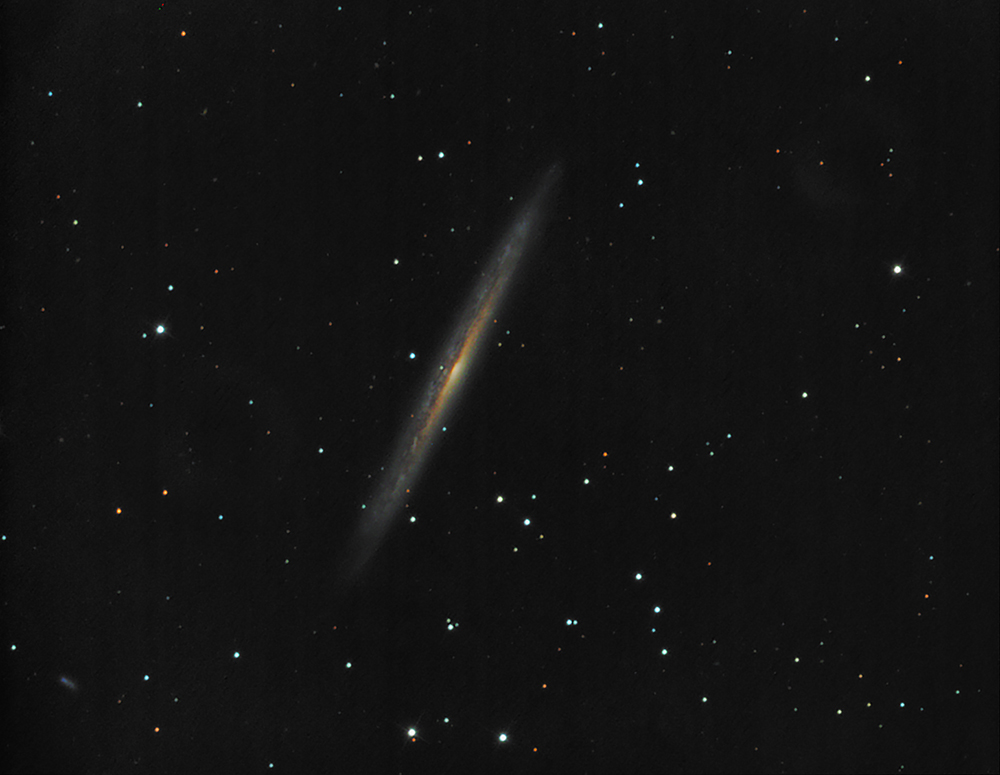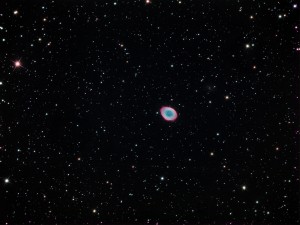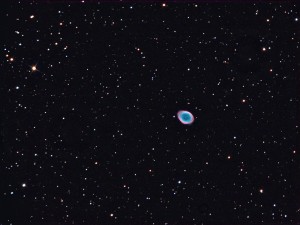Made it into the observatory briefly last night. Good thing, as it appears that there’ll be no clearing this weekend. I wanted to grab another galaxy while the Moon was out of the way.
Mount testing
Time and weather have conspired to keep me out of the observatory but I made it in there last night and grabbed a few quick shots. This is the only one I have processed. It’s time to get back out there now; it’ll be the first cloud-free Saturday night in recent memory (if it does, indeed, remain cloud-free). Plenty of Moon so I’ll be looking for narrowband objects. This NGC7635 is RGB plus some Ha for punch.
I have stuff to post about so I’ll either add to this post or start another one later. Briefly, I have new PEC table data and it is better. I’ve borrowed a 12″ LX850 OTA so I’ll be able to talk about that, too (this image was captured with it).
I see that it’s been over a month since my last post. Weather, time, and health have kept me out of the observatory so there are no new imaging sessions on which to report. Here’s what I know since then:
I mentioned a while back that I seemed to be seeing about 18 arcseconds peak-peak error when unguided in RA. The good folks at Meade wondered about that because their preshipment tests on my mount were better than that so I now have a “loaner” RA assembly to install and try. Fortunately, the mount is very modular so it’ll be an uncomplicated swap once the mount is unloaded and the c/w shaft removed; I’m just waiting for weather and time to get that done. I’ll need to open the roof to remove the OTA so it can’t be raining and I’ll need to see what I’m doing so it can’t be dark. Given the weight of the OTA and the counterweights, it’ll probably require a relative humidity of less than the 80% it has been here (that’s real work for an over-60 guy in hot weather). I’ll report on that project and any performance difference I see afterwards.
note: I relocated the Starlock to the top of the OTA to compensate for tube-ring-related flexure after posting the last image so I haven’t seen what difference that made. If possible, I’ll try to grab one image with that configuration before making the RA change in an attempt to isolate the effects. It shouldn’t affect true PE at all; just RA drift.
For anyone who doesn’t want to bother going through all the earlier posts in search of information: all images posted here were captured using an AT12RC at 2400mm focal length and a QSI683WSG-8 with 5.4 micron pixels. Some of the images are binned to double that size. All were guided with Starlock using the autoset parameters. Polar alignment was done using the mount’s assisted drift alignment routine. Mount control is via TheSky6, using the LX200GPS drivers and the mount’s HPP/Starlock autocentering. Capture and calibration software is Maxim/DL, alignment, noise reduction, and combination are done with CCDStack2, and final processing with Photoshop CS. My last mount was a Takahashi NJP. All images were captured from my red zone location: http://cleardarksky.com/lp/UrbnObOHlp.html?Mn=astronomy .
I’m not happy with this one, but it isn’t the mount’s fault. I wasn’t happy with my M101 images with the NJP, either. It’s just too dim to dig out from these urban skies. Nonetheless, here it is.
Larger version http://www.cloudynights.com/photopost/showphoto.php?photo=27635&size=big
Finally had a decent weekend night here. No Moon, decent seeing, unusually good transparency. Grabbed NGC5907 and M101. M101 has always been a challenging object for me; the images always appear “flat” when captured from my urban location. I spent more time than usual gathering data on this relatively dim extended object, hoping that the combination of more exposure time and lower-than-usual skyglow will make a difference. We’ll see what I get when I process that one. The other galaxy is a new target for me and I think it came out nicely.
The mount appeared to perform well. No wind and no discarded frames in several hours of steady work. It would have been a good night for some data gathering but I wanted to enjoy the unusually good conditions rather than doing work. Next time there’s decent seeing but a full Moon I’ll do it.
Larger version at http://www.cloudynights.com/photopost/showphoto.php?photo=27634&size=big
Had big plans this weekend; the Clear Sky Chart claimed I’d have my first two clear weekend nights since the mount was delivered. M57 is a challenge object on CN this month so I figured I’d grab some LRGB plus some ten minute Ha and OIII exposures and put together something nice. Waited a couple of hours Friday night but it never cleared. Sat in the observatory for an hour Saturday night waiting for light, fast-moving clouds to pass, then started a long series. Clouds came back; I left the series running in case it cleared but that never really happened. Got a few L, R, G, B frames and a couple of Ha but that was it. I am accustomed to getting by with less data than most folks like to use, but with only three or four each LRGB frames things are gonna be noisy. Only got two Ha frames; also inadequate. I never tried to stack only two frames before – CCDStack2 did that surprisingly well but it wasn’t very smooth. The original plan was to shoot 1X1 and crop to make a large M57 image. When I saw the clouds I switched to 2X2 for shorter exposures so no cropping.
Larger (but not great) version at: http://www.cloudynights.com/photopost/showphoto.php?photo=27599&size=big
